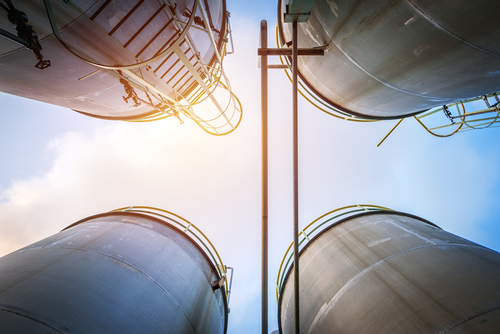TUESDAY, OCTOBER 13, 2020
On Wednesday (Oct. 7), U.S. Environmental Protection Agency Administrator Andrew Wheeler announced a proposal offering regulatory flexibility for the oil and gas industry by amending Clean Air Act regulations to allow an alternate, less cumbersome mode of inspection for certain liquid storage tanks.
The proposal intends to reduce regulatory burdens in addition to air pollutant emissions related to petroleum, chemical and coal products manufacturing facilities, as well as petroleum bulk stations, terminals and large storage tanks.
“This commonsense method of inspection not only reduces emissions of air pollutants, it also saves our vital domestic energy industry valuable time and resources,” said Wheeler. “This action by EPA further demonstrates President Trump’s commitment to environmental protection while promoting America’s energy dominance.”
Standard Background
Dating back to 1987, the EPA established the New Source Performance Standards Subpart (NSPS) Kb, which applies to large storage tanks that store volatile organic liquids across a variety of industries, such as petroleum refineries, chemical plants and portions of the oil and gas industry.

 |
| Weerapong Khodsom / Getty Images |
|
On Wednesday (Oct. 7), U.S. Environmental Protection Agency Administrator Andrew Wheeler announced a proposal offering regulatory flexibility for the oil and gas industry by amending Clean Air Act regulations to allow an alternate, less cumbersome mode of inspection for certain liquid storage tanks. |
According to the EPA, the NSPS Kb specifies by tank type and circumstance that out of service inspections for holes and tears occur at least once every 10 years, in addition to monitoring, recordkeeping, reporting and other requirements to ensure compliance with the standards as to reduce volatile organic compound emissions from storage vessels.
A little over a decade later in 1999, the EPA finalized the National Emission Standards for Hazardous Air Pollutants WW for storage vessels which allows for less cumbersome in-service inspections, without emptying and degassing the storage tank, based on certain circumstances.
Through Wheeler’s most recent proposal, compliance with NESHAP WW in lieu of compliance with NSPS Kb for storage tank inspection would be permitted.
The proposal arrives as the EPA reports to have experienced a significant uptick in the number of owners or operators requesting alternatives to conducting out-of-service inspections of storage vessels subject to the 1987 NSPS since 2018.
What Now
Responding to tank owners and operators requests regarding inspection alternatives, the EPA is proposing to reduce the burden on industry by making “in-service” inspections of certain large storage vessels filled with liquids (particularly crude and petroleum products) more widely available under Clean Air Act regulations.
According to the Agency, the proposal would offer flexibility for more than 3,500 storage vessels to conduct “in-service” rather than out-of-service inspections and estimates that it would save between $768,000 and $1.09 million in annual costs. Additionally, the proposal is estimated to reduce volatile organic compound emissions by as much as 83 tons per year.
At the time of the announcement International Liquid Terminals Association President Kathryn Clay said, “The EPA rule announced today is a common-sense solution that will lower emissions, ensure safety and provide operators with increased regulatory flexibility. By allowing greater use of a well-established, safe and effective inspection method, this new policy is a meaningful contribution to our shared goal of environmentally responsible facility management.
“ILTA and its members appreciate EPA’s efforts to address an issue that became especially challenging in recent months due to the pandemic-related imbalances in petroleum and fuels markets that constrained the storage sector.”
In its news release on the matter, the EPA also recognized that in recent months large tank inspections from the inside have become more challenging due to a significant increase in the need for liquid storage capacity (particularly crude and petroleum products), due to slower consumer demand.
To reduce the expensive, labor intensive, time consuming and often burdensome one-off requests, the EPA is pushing to allow owners and operators to conduct in-service inspections that demonstrate compliance with the 1987 Clean Air Act regulation.
The proposed amendments to the Standards of Performance for Volatile Organic Liquid Storage Vessels (Including Petroleum Liquid Storage Vessels) can be viewed in a pre-published Federal Register Notice, here.
Tagged categories: Clean Air Act; Emissions; Environmental Controls; Environmental Protection Agency (EPA); EPA; Inspection; Oil and Gas; Regulations; Tank interiors; Tanks